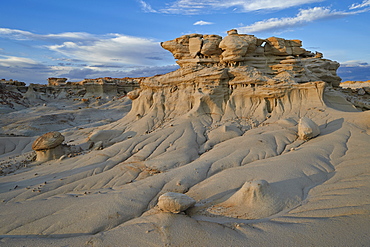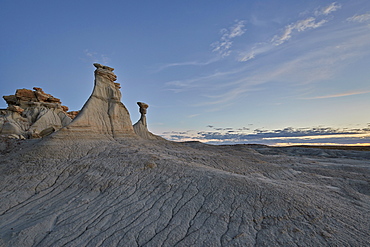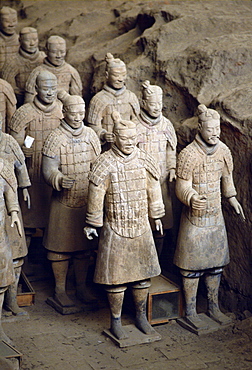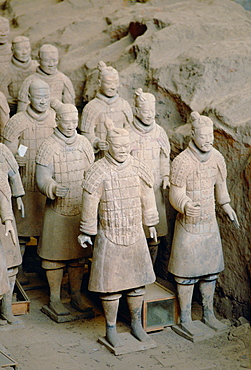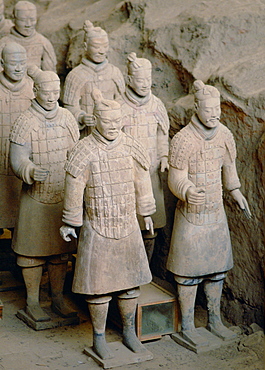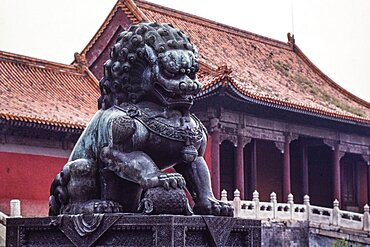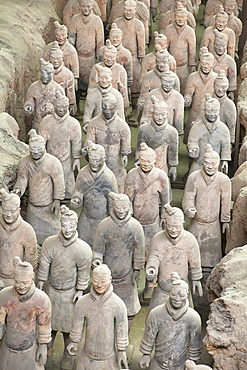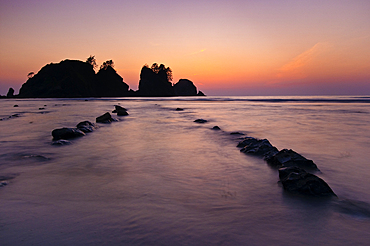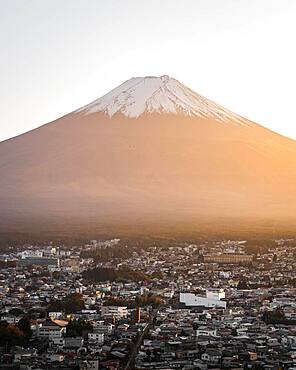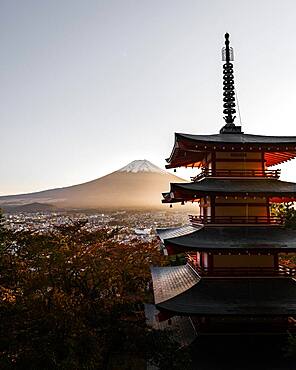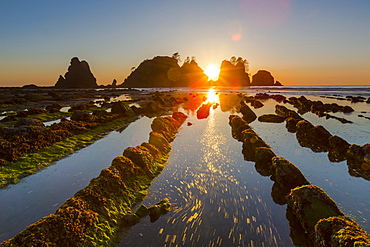Results
36 results found

The Terracotta Warriors (Terracotta Army), the funerary army of Emperor Qin Shi Huang in Xian Museum, UNESCO World Heritage Site, Xian, Shaanxi, China, Asia
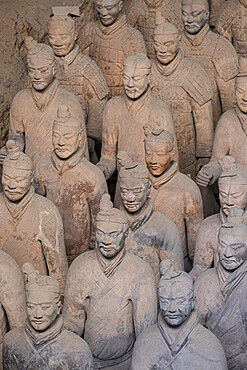
The Terracotta Warriors (Terracotta Army), the funerary army of Emperor Qin Shi Huang in Xian Museum, UNESCO World Heritage Site, Xian, Shaanxi, China, Asia
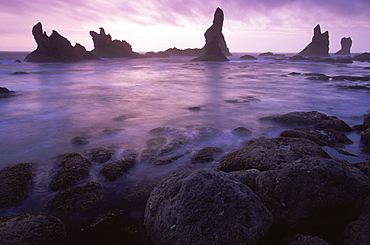
Shi Shi Beach, Olympic National Park, UNESCO World Heritage Site, Washington State, United States of America, North America

Rocks in the badlands, Ah-Shi-Sle-Pah Wilderness Study Area, New Mexico, United States of America, North America
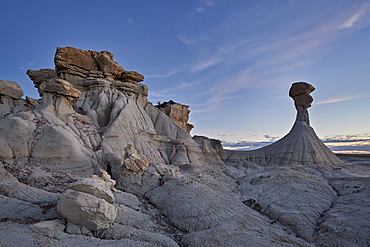
Hoodoo at dusk, Ah-Shi-Sle-Pah Wilderness Study Area, New Mexico, United States of America, North America

Rock formation in the badlands, Ah-Shi-Sle-Pah Wilderness Study Area, New Mexico, United States of America, North America
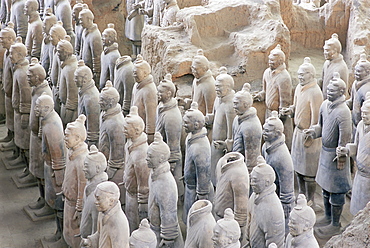
Detail of some of the six thousand statues in the Army of Terracotta Warriors, 2000 years old, from the tomb of the First Emperor of China, Qin Shi Huang, Xian, Shaanxi Province, China, Asia
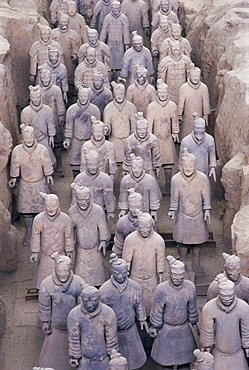
Detail of some of the six thousand statues in the Army of Terracotta Warriors, 2000 years old, from the tomb of the First Emperor of China, Qin Shi Huang, Xian, Shaanxi Province, China, Asia
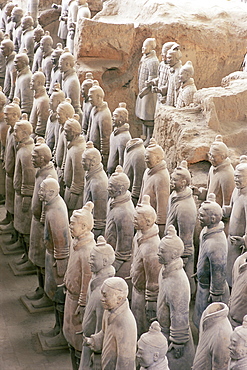
Detail of some of the six thousand statues in the Army of Terracotta Warriors, 2000 years old, from the tomb of the First Emperor of China, Qin Shi Huang, Xian, Shaanxi Province, China, Asia

Six thousand terracotta figures two thousand years old, Army of Terracotta Warriors, from the tomb of the First Emperor of China, Qin Shi Huang, Xian, Shaanxi Province, China, Asia
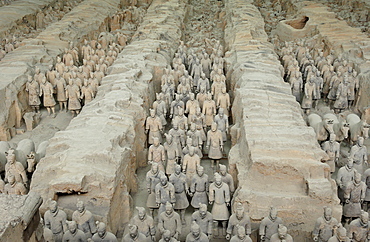
Terracotta Army, guarded the first Emperor of China, Qin Shi Huangdi's tomb, Xian, Lintong, Shaanxi, China, Asia

View of Shi Baozhai Pagoda at sunset on Yangtze River near Wanzhou, Chongqing, People's Republic of China, Asia
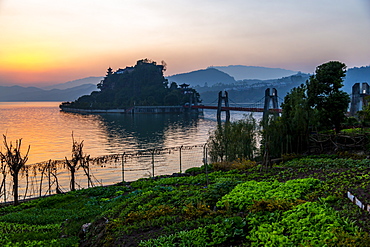
View of Shi Baozhai Pagoda at sunset on Yangtze River near Wanzhou, Chongqing, People's Republic of China, Asia

View of Shi Baozhai Pagoda on Yangtze River near Wanzhou, Chongqing, People's Republic of China, Asia

View of Shi Baozhai Pagoda at sunset on Yangtze River near Wanzhou, Chongqing, People's Republic of China, Asia

View of Shi Baozhai Pagoda on Yangtze River near Wanzhou, Chongqing, People's Republic of China, Asia
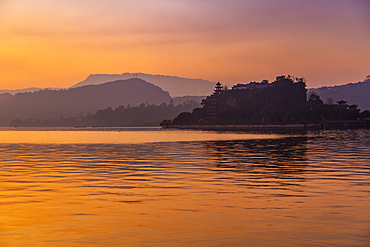
View of Shi Baozhai Pagoda at dusk on Yangtze River near Wanzhou, Chongqing, People's Republic of China, Asia
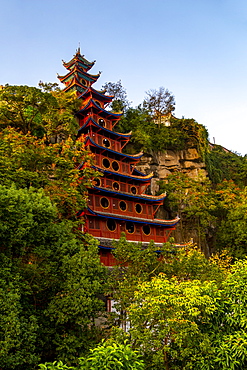
View of Shi Baozhai Pagoda on Yangtze River near Wanzhou, Chongqing, People's Republic of China, Asia

View of Shi Baozhai Pagoda on Yangtze River near Wanzhou, Chongqing, People's Republic of China, Asia
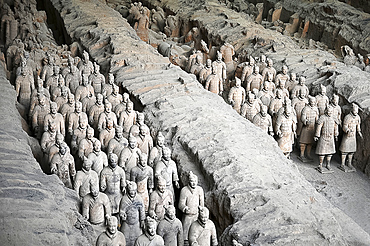
Terracotta Army, funerary sculptures buried with Emperor Qin Shi Huang in 210-209 BC, UNESCO World Heritage Site, Xian, Shaanxi, China, Asia

Terracotta Army, funerary sculptures buried with Emperor Qin Shi Huang in 210-209 BC, UNESCO World Heritage Site, Xian, Shaanxi, China, Asia
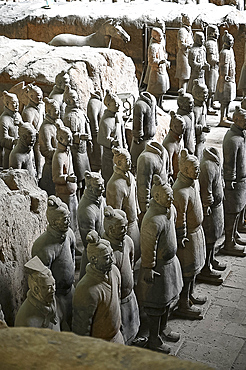
Terracotta Army, soldiers and a horse, buried with Emperor Qin Shi Huang in 210-209 BC, UNESCO World Heritage Site, Xian, Shaanxi, China, Asia
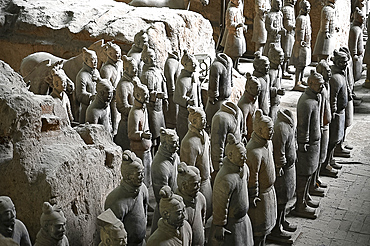
Terracotta Army, soldiers and a horse, buried with Emperor Qin Shi Huang in 210-209 BC, UNESCO World Heritage Site, Xian, Shaanxi, China, Asia
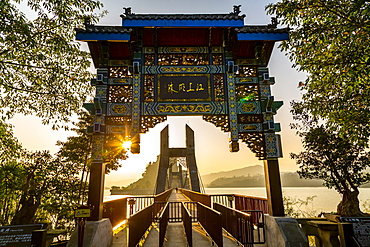
View of entrance to Shi Baozhai Pagoda on Yangtze River near Wanzhou, Chongqing, People's Republic of China, Asia
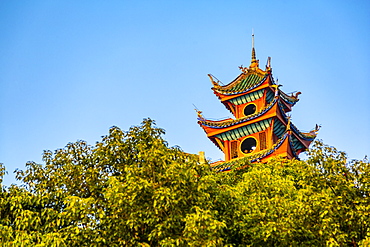
View of Shi Baozhai Pagoda on Yangtze River near Wanzhou, Chongqing, People's Republic of China, Asia
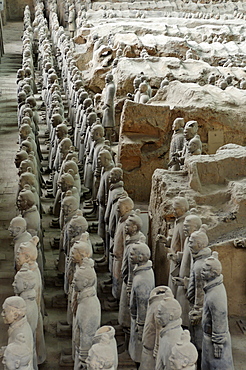
Terracotta Army, guarded the first Emperor of China, Qin Shi Huangdi's tomb, Xian, Lintong, Shaanxi, China, Asia
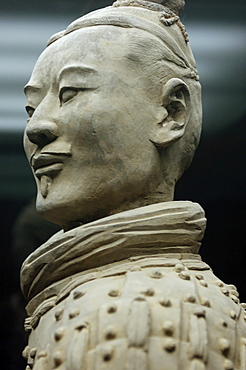
Terracotta Army, guarded the first Emperor of China, Qin Shi Huangdi's tomb, Xian, Lintong, Shaanxi, China, Asia
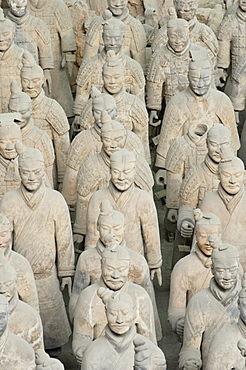
Terracotta Army, guarded the first Emperor of China, Qin Shi Huangdi's tomb, Xian, Lintong, Shaanxi, China, Asia
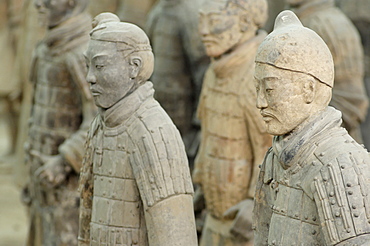
Terracotta Army, guarded the first Emperor of China, Qin Shi Huangdi's tomb, Xian, Lintong, Shaanxi, China, Asia

Terracotta Army, guarded the first Emperor of China, Qin Shi Huangdi's tomb, Xian, Lintong, Shaanxi, China, Asia
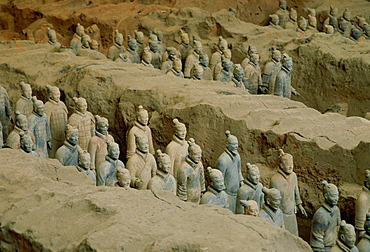
Figurines in the Museum of the Qin Terracotta Warriors, the mausoleum of Qin Shi Huang,emperor of China, Xian, Shaanxi Province, Northwest China discovered in 1974.
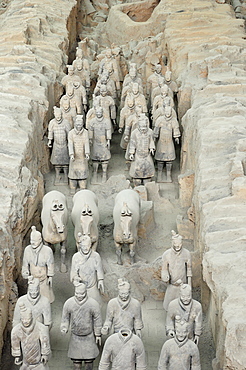
Terracotta Army, guarded the first Emperor of China, Qin Shi Huangdi's tomb, Xian, Lintong, Shaanxi, China, Asia

Terracotta Army, guarded the first Emperor of China, Qin Shi Huangdi's tomb, Xian, Lintong, Shaanxi, China, Asia
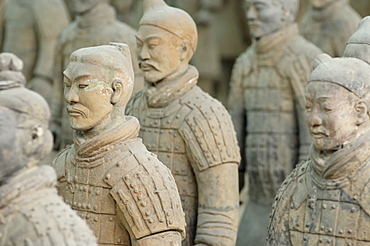
Terracotta Army, guarded the first Emperor of China, Qin Shi Huangdi's tomb, Xian, Lintong, Shaanxi, China, Asia
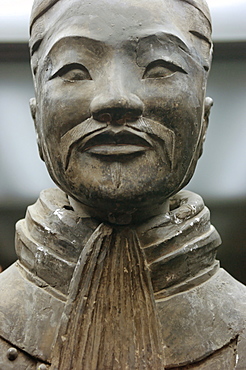
Terracotta Army, guarded the first Emperor of China, Qin Shi Huangdi's tomb, Xian, Lintong, Shaanxi, China, Asia
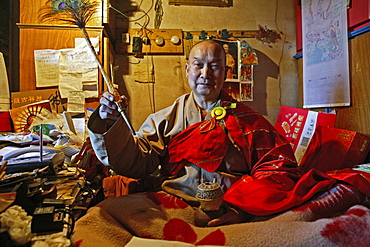
Abbot with peacock feather, Shi Neng Xiu of Santa Monastery, Wutai Shan, Buddhist holy Mountain, Shanxi province, China, Asia
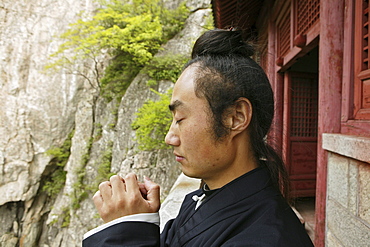
Taoist monk Zhang Qingren demonstrating Tai Chi, Hou Shi Wu Temple, Mount Tai, Tai Shan, Shandong province, World Heritage, UNESCO, China
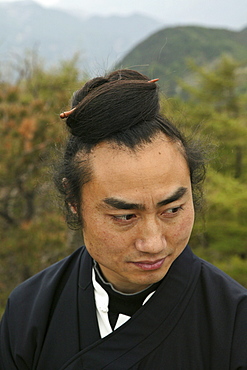
Taoist monk Zhang Qingren demonstrating Tai Chi, Hou Shi Wu Temple, Mount Tai, Tai Shan, Shandong province, World Heritage, UNESCO, China
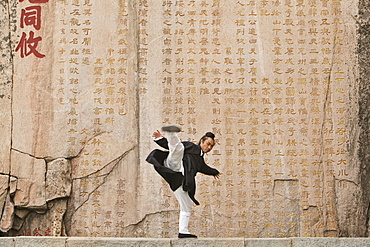
Taoist monk Zhang Qingren demonstrating Tai Ch infront of a famous inscription from Emperor Xuanzong, Hou Shi Wu Temple, Mount Tai, Tai Shan, Shandong province, World Heritage, UNESCO, China
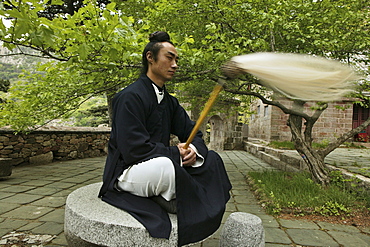
Taoist monk Zhang Qingren demonstrating Tai Chi, Hou Shi Wu Temple, Mount Tai, Tai Shan, Shandong province, World Heritage, UNESCO, China

Taoist monk Zhang Qingren about to demonstrate Tai Chi, Hou Shi Wu Temple, Mount Tai, Tai Shan, Shandong province, World Heritage, UNESCO, China

Taoist monk Zhang Qingren demonstrating Tai Ch infront of a famous inscription from Emperor Xuanzong, Hou Shi Wu Temple, Mount Tai, Tai Shan, Shandong province, World Heritage, UNESCO, China

Taoist monk Zhang Qingren demonstrating Tai Ch infront of a famous inscription from Emperor Xuanzong, Hou Shi Wu Temple, Mount Tai, Tai Shan, Shandong province, World Heritage, UNESCO, China
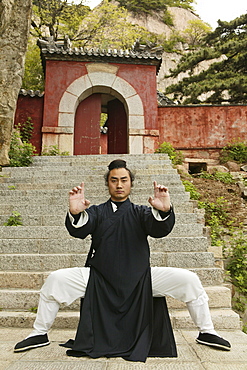
Taoist monk Zhang Qingren demonstrating Tai Chi, Hou Shi Wu Temple, Mount Tai, Tai Shan, Shandong province, World Heritage, UNESCO, China

Taoist monk Zhang Qingren about to demonstrate Tai Chi, Hou Shi Wu Temple, Mount Tai, Tai Shan, Shandong province, World Heritage, UNESCO, China
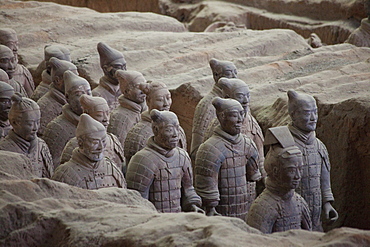
Soldiers of The Terracotta Army of the First Emperor of China, near the mausoleum of Shi Huangdi near Xi'an, Shaanxi Province, People's Republic of China
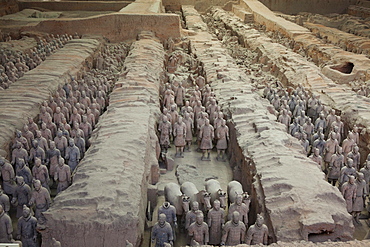
Soldiers of The Terracotta Army of the First Emperor of China, near the mausoleum of Shi Huangdi near Xi'an, Shaanxi Province, People's Republic of China
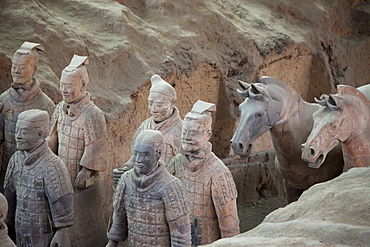
Soldiers of The Terracotta Army of the First Emperor of China, near the mausoleum of Shi Huangdi near Xi'an, Shaanxi Province, People's Republic of China
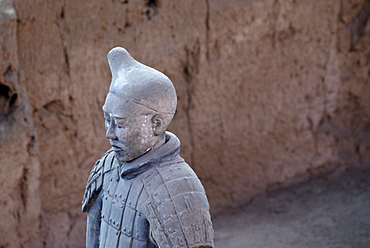
Terracotta army, part of the grave complex, hall 1, mausoleum of the 1st Emperor Qin Shi Huang in Xi'an, Shaanxi Province, China, Asia
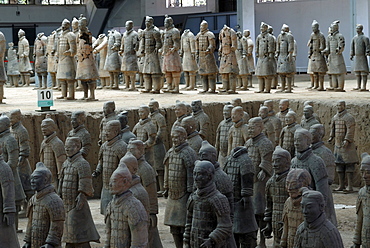
Terracotta army, part of the grave complex, hall 1, mausoleum of the 1st Emperor Qin Shi Huang in Xi'an, Shaanxi Province, China, Asia
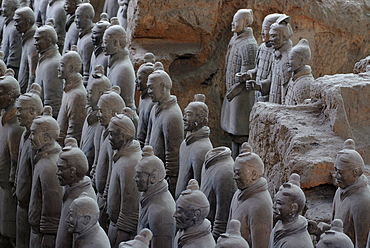
Terracotta army, part of the grave complex, hall 1, mausoleum of the 1st Emperor Qin Shi Huang in Xi'an, Shaanxi Province, China, Asia
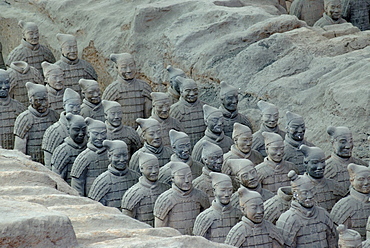
Terracotta army, part of the grave complex, hall 1, mausoleum of the 1st Emperor Qin Shi Huang in Xi'an, Shaanxi Province, China, Asia
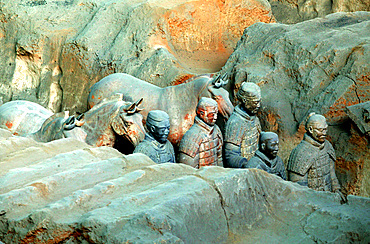
Xi'an's greatest and most important attraction: the Terracotta warriors.The terracotta warriors is part of the grand tomb, built by the first Chinese emperor,Qin Shi Huangdi, Shaanxi, Northwest China, Asia

Xi'an's greatest and most important attraction: the Terracotta warriors.The terracotta warriors is part of the grand tomb, built by the first Chinese emperor,Qin Shi Huangdi, Shaanxi, Northwest China, Asia
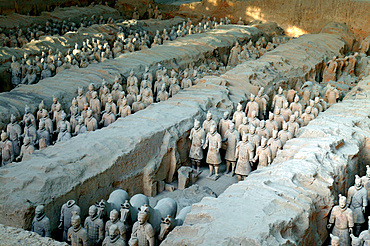
Xi'an's greatest and most important attraction: the Terracotta warriors.The terracotta warriors is part of the grand tomb, built by the first Chinese emperor,Qin Shi Huangdi, Shaanxi, Northwest China, Asia
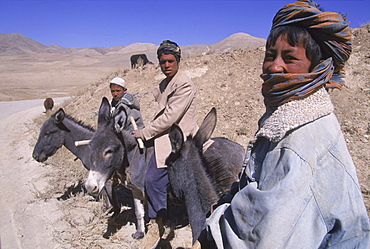
Young boys on donkeys watch over flocks of goats, sheep and donkeys near the top of the Shebar Pass, which crosses into the Province of Bamiyan. Due to a devastating drought in the region, dry wheat farming has failed for three years from 1998-2002 and the forage is extremely sparse, The pass is a strategic point leading into the Central Highlands, the Koh-i-Baba range and the Hazarajat, at the end of the Hindu Kush. Most of the people of this region are of the Hazara tribe, and are Shi'a Moslems who have been persecuted for centuries by many of the Pashtun rulers of Afghanistan, who are from the Sunni sect.

Women in burqas flock like doves to the entrance of the main mosque at the Blue Mosque complex, Mazar-i-Sharif, Balkh Province, September 23, 2002. Wednesday mornings are reserved for women to come and worship at the mosque.Elaborate tilework and decorated spires adorn the mosque, also known as the Shrine of Hazrat Ali (Hazrat Ali was the son-in-law of the prophet Mohammed), who is believed to be buried here. The shrine, of particular importance for Afghanistan's Shi'ite Muslims, was first built in the 12th century, destroyed by Genghis Khan, and rebuilt in 1481. The current mosque, considered by some to be one of the most beautiful in Central Asia, is a modern restoration.
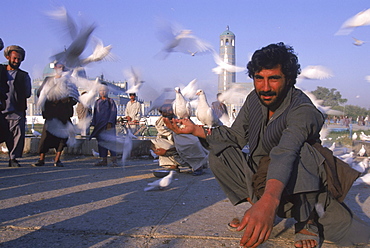
A man feeds white doves at dawn in front of the Blue Mosque, Mazar-i-Sharif, Balkh Province. Hundreds of doves, who are fed by worshippers and tended by special workers, live around the mosque, and it is thought that the place is so holy that a grey or brown dove will turn white if it lands on the Mosque. The mosque is also known as the Shrine of Hazrat Ali (Hazrat Ali was the son-in-law of the prophet Mohammed), who is believed to be buried here. The shrine, of particular importance for Afghanistan's Shi'ite Muslims, was first built in the 12th century, destroyed by Genghis Khan, and rebuilt in 1481. The current mosque, considered by some to be one of the most beautiful in Central Asia, is a modern restoration.
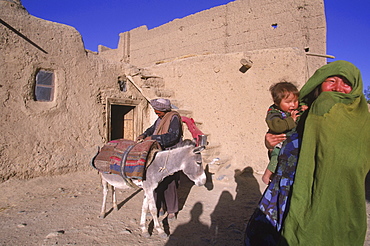
Striking Mongol features distinguish the face of a woman and her child (who is blind) living in the ruins of the Qala-i-Dokthar (Daughter's Castle), outside of the town of Bamiyan, August 30, 2002. Most of the old town was destroyed and up to 20,000 people of the region might have perished when Bamiyan fell to the Taliban in 2001. Bamiyan Valley is located in the Hazarajat at the edge of the Koh-i-Baba range , the end of the Hindu Kush. Bamiyan was a prosperous Buddhist kingdom on the ancient Silk Road until the 10th century, when the region was converted to Islam; in the 12th century, it was destroyed by Ghengis Khan. Most of the people of this region are of the Hazara tribe, and are Shi'a Moslems who have been persecuted for centuries by many of the Pashtun rulers of Afghanistan, who are from the Sunni sect. They most recently suffered at the hand of the Taliban, who tried for years to ethnically cleanse the region of its Shi'a people.

Striking Mongol features distinguish the face of Hamir Mohammed, his daughter and grandson (who is blind), all living in the ruins of the Qala-i-Dokthar (Daughter's Castle), outside of the town of Bamiyan, August 30, 2002. Most of the old town was destroyed and up to 20,000 people of the region might have perished when Bamiyan fell to the Taliban in 2001. Bamiyan Valley is located in the Hazarajat at the edge of the Koh-i-Baba range , the end of the Hindu Kush. Bamiyan was a prosperous Buddhist kingdom on the ancient Silk Road until the 10th century, when the region was converted to Islam; in the 12th century, it was destroyed by Ghengis Khan. Most of the people of this region are of the Hazara tribe, and are Shi'a Moslems who have been persecuted for centuries by many of the Pashtun rulers of Afghanistan, who are from the Sunni sect. They most recently suffered at the hand of the Taliban, who tried for years to ethnically cleanse the region of its Shi'a people
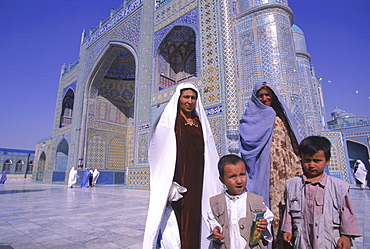
Tajik women proudly pose with their children, burqa's thrown back, in front of the main entrance to the Blue Mosque, Mazar-i-Sharif, Balkh Province. Wednesday mornings are reserved for women to come and worship at the mosque. Elaborate tilework and decorated spires adorn the mosque, also known as the Shrine of Hazrat Ali (Hazrat Ali was the son-in-law of the prophet Mohammed), who is believed to be buried here. The shrine, of particular importance for Afghanistan's Shi'ite Muslims, was first built in the 12th century, destroyed by Genghis Khan, and rebuilt in 1481. The current mosque, considered by some to be one of the most beautiful in Central Asia, is a modern restoration.
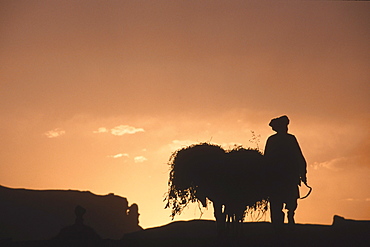
A farmer with his donkey loaded with forage walks toward the setting sun above the town of Bamiyan, August 30, 2002. Most of the old town was destroyed and up to 20,000 people of the region might have perished when Bamiyan fell to the Taliban in 2001. Bamiyan Valley is located in the Hazarajat at the edge of the Koh-i-Baba range , the end of the Hindu Kush. Bamiyan was a prosperous Buddhist kingdom on the ancient Silk Road until the 10th century, when the region was converted to Islam; in the 12th century, it was destroyed by Ghengis Khan. Most of the people of this region are of the Hazara tribe, and are Shi'a Moslems who have been persecuted for centuries by many of the Pashtun rulers of Afghanistan, who are from the Sunni sect. They most recently suffered at the hand of the Taliban, who tried for years to ethnically cleanse the region of its Shi'a people
